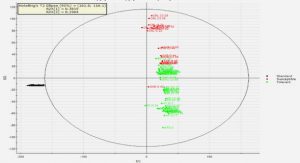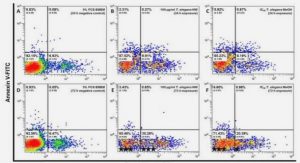Get Complete Project Material File(s) Now! »
Importance and necessity
Environmental degradation and energy crisis problems are becoming more and more obvious since last century. The total energy consumption is rising in the last several decades [1] (Fig. 1-1 and will keep increasing in the future decades if we do nothing. The global CO2 emissions have increased by 51% since 1990. Awareness of energy conservation and environment protection is growing and the analytical works are into concrete actions. Many countries all over the world are making efforts on the energy and environment. More than 170 countries have signed a legally binding and universal agreement on climate (Paris agreement) negotiated in 2015 COP21 (Conference of Parties) to reduce greenhouse gas emissions. Fortunately, the primary energy intensity is decreasing in 80% of World Energy Council’s member countries and most regions. There is also a decreasing trend in energy consumption per household.
In the energy structure, buildings consume the largest share comparing with industry, transport and others, and also consumes half of global electricity. Meanwhile, buildings are also responsible for about 17% of total direct energy-related CO2 emissions from final energy consumers [2]–[5]. According to the IEA(International Energy Agency) statistics [6], buildings represent 35% (2010 edition) of total final energy consumption. In terms of primary energy consumption, buildings represent around 40% in most IEA countries. U.S. buildings represent 39.8% of total energy use in 2015 (residential and commercial sectors are combined). Moreover, with the increasing population, economic development and improving living levels, the building consumption will rise sharply in the future and form additional pressure on the energy system. Energy demand in buildings will rise in the future decades.
Building energy consumption mainly includes climate controlling (space heating and cooling), water heating, applications, lighting and other installed equipment. As shown in Fig.1-2 [7], the top four end uses space heating, space cooling, water heating, and lighting—accounted for close to 70% of site energy consumption. Climate controlling occupies more than half of the consumption, which can be improved by rising the building energy efficiency.
Meanwhile, direct CO2 emissions in the residential and commercial building sectors are largely from space heating, space cooling, water heating, and cooking equipment. The CO2 emissions associated with the use of electricity in these sectors exceed the direct emissions from these sectors.
A building with high energy efficiency can reduce the energy consumption and CO2 emissions by climate controlling. Improving the building energy efficiency is of great importance. Methods and policies are encouraged to renovate and improve the energy efficiency of both existing buildings and future buildings. The building envelope plays a critical role in determining levels of comfort and building efficiency. A building envelop with good thermal performance can prevent heat loss from indoor to outdoor in winter and protect from heated by outdoor ambient in summer.
Research and development on the thermal diagnostic methodology in building envelop become a hot topic and inevitable trend, for example, it is necessary in the following cases:
(1) New building accreditation: for new buildings, though the wall performances have been designed, once built, the wall characteristics may be not the designed values because of the faults of construction management, humidity, the compaction or expansion of the thermal insulation, materials defects and so on. This performance Gap (the difference between the energy use that buildings are designed to achieve and what they actually achieve when built and in use) is a real problem. Therefore, the wall properties of a new building is recommended to be verified when it was built.
(2) Renovating energy efficiency of existing building: the thermal properties of old buildings evolve from that when it was built. The properties data of the old building may be lost or incomplete. The in situ inspection on old building wall is required to improve the energy efficiency.
(3) Building resale and renting: Energy Performance Certifications (EPCs) are important obligations, the building envelope plays evidence role.
(4) New energy-efficient building materials characterization: the new energy-efficient building materials should be characterized before the application to minimize energy required and decrease heat loses.
Conventional thermal diagnosis metrology for solids on lab-scale
There are three heat transfer forms: radiation, convection and conduction. All the three forms are considered in the thermal properties measurement.
Many methodologies have been developed to estimate these thermal parameters of solids. According to the heat transfer regimes, these methods are divided into steady-state techniques and transient (dynamic) techniques [8]. These methods are usually used on small-scaled solids and mainly implement in the laboratory. The followings will introduce some well-developed diagnosis technologies on lab-scale.
Steady state techniques
The steady-state techniques are the earliest group of measurement techniques. These measurements are based on a steady state heat transporting: establishing a temperature gradient on a sample with known thickness, controlling the heat flow from one side to the other and ensuring a one-dimensional flow approach. The thermal conductivity and thermal resistance can be calculated by Equ. 1-7 and Equ. 1-8, which are simply obtained by measuring the temperature gradient and the heat flow through the sample. These methods are primarily suitable for analyzing materials with low or average thermal conductivities at moderate temperatures [8]. The difficulties of this method are to build the steady state heat transfer regime and to obtain the heat flux (q). = /∆ 1-8
Three measurement techniques are commonly used: the guarded hot plate technique, the heat-flow meter technique and the hot-box technique.
The guarded hot plate method has become a standard: ISO 8302 [9]. Heat was supplied electrically at a known rate to the hot plate, the cold plates were maintained at constant temperature by circulation of either water or brine through the plates, so that a constant temperature difference was maintained between the hot and cold plates. The thermal conductivity of the sample can be obtained with the constant temperature difference and the given heat flow based on Equ. 1-8. Industrial instruments have been manufactured based on this techniques. For instance, Fig. 1-3 is the device of NETZSCH GHP 456 for measuring thermal conductivity.
The heat-flow meter technique is to use a heat flow sensor to measure the heat flux. Similarly, the thermal conductivity of tested sample can be calculated with this measured heat flux and temperature difference based on Equ. 1-8. This method has also become the standards: ASTM C518 [10] and ISO 8301 [11]. Fig. 1-4 is the manufactured instrument: NETZSCH HFM 436 Lambda.
The hot box technique (ISO 8990) [12] is usually used for estimating the overall thermal resistance or thermal transmittance (heat transfer from air to air). It includes the Guarded Hot Box and the Calibrated Hot Box. In the Guarded Hot Box method, as shown in Fig. 1-5 (a) [13], a large specimen is placed between a hot and a cold chamber operating at fixed temperatures and humidity. With the guarded chamber, the heat losses of the metering chamber is zero, the heat flow of specimen is determined by the input heat. Without the guarded chamber (Fig. 1-5 (b)), the entire apparatus is located in a surrounding ambient whose temperature is known, the specimen heat flow can be obtained based on the heat flow balance.
The transient techniques
The transient techniques are based on the generation of a dynamic temperature filed inside the sample. Temperature response is measured when a heat signal is sent to the sample. This signal can be in the form of a heat pulse or a step-wise heat flux. Generally, according to the apparatus, these techniques are divided into contact transient method and optical transient method (Fig. 1-6).
In the contact transient method, the heat signal is in contact with the sample. The heat source and thermometer are placed inside of the specimen. The dynamic temperature filed is generated by an electrical resistance. The heat signal is a pulse or a periodic heat flux. The geometries of the heating resistance can be line, plane or disc. This method is widely used because it is simple and easily to be implemented. Fig. 1-7 (a) shows the sensors for transient plane source method and Fig. 1-7 (b) shows the sensors for transient line source method.
Kubicar and Bohac [14] made a review on the transient methods to measure thermal parameters, and summarized several contact transient techniques, including Pulse Transient Method, Hot Wire Method, Step-wise Transient Method, Hot Plate Transient Method and Hot Disc Transient. More details are analyzed in this reference: the mathematical models, experiment arrangements, and sensitivity.
The step-wise transient method was studied in research [15] with a planar heat source. M. J. Assael [16] applied the transient hot-wire technique to measure the thermal conductivity based on the finite-element method. Silas E. Gustafsson [17] studied the pulse transient method to measure the thermal conductivity and thermal diffusivity using hot square and hot disk elements.
The optical transient technologies are more advanced, more expensive and have higher requirements on the equipment. This method can directly measure the thermal diffusivity of specimen. The heat source signal is an energy pulse (Laser flash) or thermal waves. The most widely used technique is the flash method.
The flash method was first approved and described by W. J. PARKER et al. [18] in 1960 for measuring the thermal diffusivity, heat capacity, and thermal conductivity. It has become the main technique to measure the thermal diffusivity of solids.
A laser or a flash lamp is applied on one surface of the specimen, the temperature sensors (thermocouples or IR camera) is installed at the rear face. The thermal diffusivity can be calculated with the temperature-time response curve and the thickness of the specimen.
Table of contents :
Chapter 1 Introduction
1.1 Context
1.1.1 Importance and necessity
1.1.2 Conventional thermal diagnosis metrology for solids on lab-scale
1.1.3 Challenges for thermal diagnosis on building walls in situ
1.2 Review on thermal diagnostic methodologies for building walls
1.2.1 Steady state heat transfer techniques
1.2.2 Transient heat transfer techniques
1.2.3 Application of infrared thermography (IRT) technique
1.2.4 Terahertz radiation method
1.3 Objective and outline
Chapter 2 Experimental sensors and facilities
2.1 Sensors
2.1.1 Infrared camera
2.1.2 Thermocouples
2.1.3 Heat flux sensors
2.2 Sensors calibration
2.2.1 Calibration of thermocouple
2.2.2 Calibration of heat flux sensors
2.3 Experiments in the laboratory
2.3.1 Experimental scheme and configuration
2.3.2 Facilities
2.4 Experiments in situ
Chapter 3 Measurements and data processing
3.1 Emissivity
3.1.1 Emissivity measurement
3.1.2 Fundamental and data processing
3.1.3 Emissivity results
3.2 Heat flux
3.2.1 Measurements
3.2.2 Data processing of heat flux
3.2.3 Heat flux results
3.3 Temperature measurement with IR camera
3.4 Thermography processing
3.4.1 Basic principles of SVD
3.4.2 Processing multi IR images by PCT
3.4.3 Image filter
Chapter 4 Estimation approaches for thermal parameters characterizing
4.1 Steady state heat transfer method
4.2 Thermal quadrupoles solution
4.2.1 Basics of thermal quadrupoles model
4.2.2 Simulations for several heating signals
4.2.3 Application to experiments
4.2.4 Approximated expressions
4.3 Pulse response curve method
4.3.1 Simulation analysis of pulse response curve
4.3.2 Deconvolution of experimental data
4.3.3 Experimental pulse response results
4.4 Step response curve method
4.4.1 Simulation analysis of step response curve
4.4.2 Experimental results of step response
4.5 Inverse method to estimate thermal parameters
4.5.1 Inverse method basics
4.5.2 Optimal results
4.6 Comparisons of the three thermal methods
Chapter 5 Terahertz radiation diagnostic method
5.1 Introduction
5.2 Experimental setup
5.3 Results and analysis
5.4 Discussion of combination
Chapter 6 Conclusion and perspectives
Bibliography
Appendix
Appendix A: Infrared camera, FLIR A325
Appendix B: Thermocouples fundamentals
Appendix C: Calibration results of thermocouples
Appendix D: Calibration of halogen lamps
Appendix E: ISO 18434-1:2008(E)
Appendix F: Temperature and heat flux results of the laboratory-case (T1 T2 q1 q2)
Appendix G: Temperature and heat flux results of in situ-case (T1 T2 q1 q2)
Appendix H: Absorbance and emissivity values of references
Appendix I: Usual Laplace transform
Appendix J: Matlab algorithm






